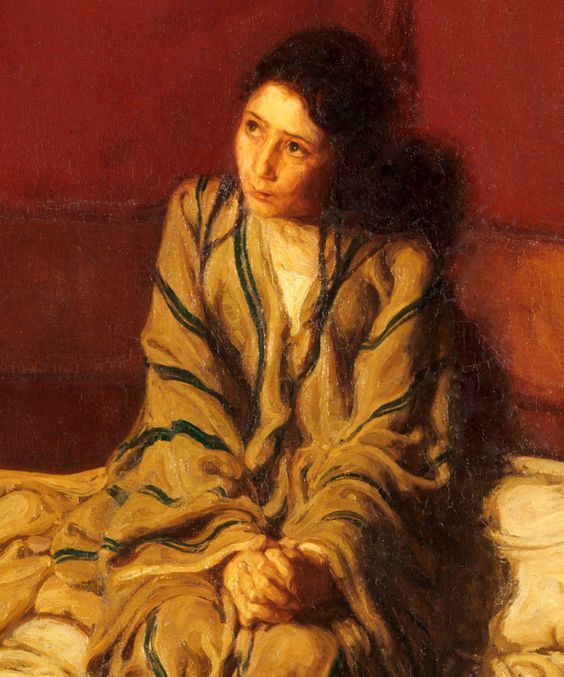Merry Christmas, everyone! Alleluia! Christ is born to us.
I know that sounds like a strange greeting in February, but in some Christian traditions the season of Christmas actually runs from December 25 all the way to February 2, to the feast alternatively known as the Feast of the Presentation of Jesus Christ, the Feast of the Purification of the Virgin, and Candlemas. This celebration commemorates Mary and Joseph’s visit to the Temple in Jerusalem for Mary to undergo her postpartum purification rites and to present their firstborn son according to the traditions of the Law of Moses (Luke 2:22-40), where they encounter Simeon and the Prophet Anna. The name “Candlemas” derives from the blessing of candles that became a central ritual of this feast, reminding us that (especially in the dark days of winter) Jesus is the light of the world. Stretching Christmas to Candlemas creates a 40-day period that parallels the holy season of Lent leading up to Easter.
I must confess I do not regularly observe Candlemas in any intentional way (though I am quite fond of an old Renaissance tune called, “Now Candlemas Is Come at Last“); but I am going to embrace it this year so that I can say I got this blog up before the end of Christmas! It has taken me much longer than anticipated to collect my thoughts on these paintings – but here, at long last, are my observations and reflections on the Annunciation paintings of Botticelli and Tanner. These works of art help me not to lose sight of the Baby Jesus amid the piles of presents and mountains of food that so easily define the Christmas landscape. I hope they have done (or will do) the same for you as you continue to reflect on the meaning and the miracle of Jesus’ coming. What I offer here is intended to expand the reach of your own contemplations, not replace them.
First up is Sandro Botticelli’s Annunciazione di Cestello. But before we dive in, some background is in order.
Botticelli is working within a set tradition or “template” for the Annunciation that developed in the late Middle Ages and early Renaissance. Below are three preceding and contemporary examples for comparison. All three works are distinct but share a palette of common elements and conventions.

Pietro Cavallini, 1291 (top left); Giovanni di Paolo, c. 1435 (bottom left); Fra Angelico, c. 1440 (bottom centre); Dominico Ghirlandaio, c. 1480 (right)
Notice that in all three of these Annunciation scenes Gabriel is situated on the left and Mary on the right. The setting is stylized and contemporary to the artist. The background is divided into indoor and outdoor space, with Gabriel occupying (or in close proximity to) the open, natural space while, in some fashion, Mary is confined – a double reference, it would seem, to both Mary’s chastity and humanity’s captivity. Gabriel kneels or bows as Mary either stands or sits, i.e. she holds the posture of the one being honoured. Gabriel holds a white lily – and if he doesn’t hold it, one is present somewhere in the scene: a symbol of Christ’s unblemished purity and perhaps Mary’s as well. Gabriel’s clothing varies depending on the preference and imagination of the artist, but Mary’s attire is more or less the same save for fashionable flourishes: a blue outer garment covering a red(ish) inner garment. Blue is a colour associated with the earth and the created order. Red (or, alternatively, gold or white) is associated with heaven and the divine. Mary’s garb thus identifies her as the “Mother of God”: the maiden who has conceived God’s Son within her mortal womb.
Botticelli works within these established conventions to craft his own distinct yet familiar rendition of the Annunciation. And in this case, the gospel (rather than the devil) is in the details.

The Setting
Botticelli painted this Annunciation for the Cestello Monastery in Florence, hence the title. The Tuscan countryside is visible through the window under which Gabriel kneels. Whether the scene is set inside the monastery or not is unclear; but wherever in Tuscany it is, this is not the room of a peasant girl. It’s a room of and for the privileged – a room with a view. And what a view!
The doorway with it’s distinctive moulding, opening up onto a veranda with a grand vista beyond, divides the painting vertically in two. Gabriel kneels in front of the doorway while the wall hems Mary in. Grand castles and a meandering river populate the horizon above the angel’s shoulder; but the most distinctive feature of this background is the enormous tree towering above everything in sight.
This tree could symbolise a few different things and Botticelli may intend it to be a double or even triple entendre. Trees generally symbolise life, and a tree of this height certainly signifies abundant life. This particular tree may also (or likewise) allude to the Tree of Life in the Garden of Eden. Some portrayals of the Annunciation, such as Giovanni di Paolo’s above, actually feature Adam and Eve in the background because in Romans 5, the Apostle Paul describes Christ as “the second Adam.” Paul’s argument is that Jesus’ faithfulness and obedience to God (even unto death) reverses and closes the rift Adam and Eve opened between humanity and heaven when they ate of the forbidden fruit. A medieval Latin hymn, “Ave Maris Stella,” plays on this theme from the feminine side, proclaiming Gabriel’s “Ave” to Mary “transforms the name of Eve,” which is Latin is Eva, or Ave spelled backwards. Thirdly (or additionally) this prominent tree may also prefigure the Cross that looms in Christ’s future, which Paul refers to simply as “the tree” in Galatians 3, echoing the language of Deuteronomy 21.
The Figures
Even though, strictly speaking, Mary is just now learning that God has chosen her to become the mother of the Messiah, Botticelli depicts her already as the “Queen of Heaven.” Intricate gold lace accents her fine, flowing gowns and a haloed crown sits upon her head. Gabriel is likewise attired in flowing, silken finery, and he and Mary bow toward each other with outstretched arms; yet it is Gabriel, the messenger from heaven, the angel who lives in the very presence of God, who assumes the more humble posture. The honour in this scene is Mary’s, not his. Note, too, Gabriel’s wings. While Botticelli hasn’t painted Gabriel in a way we could rightly describe as frightening, this isn’t some cute, harmless cherub who has come to visit Mary. These are the wings of a hawk or an eagle – powerful wings, the wings of a bird of prey – signalling that this is a being not to be trifled with. That he, a formidable agent of God, is humbling himself before this young woman – whom Botticelli has painted physically larger, taking up more space in the scene – drives home the extraordinary importance of who she is and the significance of what she is agreeing to. My read of Mary’s stance is that this is a moment late in their encounter during which (or just after) she gives her assent to become “the handmaiden of the Lord.”
The Lines

Most of the lines in Annunciazione di Cestello are vertical: the tree, the door-frame, the towers on the castles, the wider, heavier lines on the floor; even Gabriel’s and Mary’s outstretched arms move from low to high. They lead our eyes from earth toward heaven and from the room out into the world beyond the doorway. Something incredible is taking place in this room; but it will not stay confined to this room.
The lines on the floor also separate Gabriel and Mary. Yet, Mary’s gown is creeping over the line, breaching the boundary, inching closer to the angel. A close inspection shows that an ethereal hem of Gabriel’s garment is doing the same. This is one of my favourite details in the painting – the human and the divine drawn closer together at God’s instigation but with Mary’s consent. It is a subtle but remarkable commentary on the nature of the gospel. Jesus is coming into the world to obscure lines, break down barriers, and push envelopes of all sorts. Because crossing the divides that keep us apart is essential for us to experience the abundant life Christ offers us and longs for us to enjoy.
Now, to Tanner:

Henry Ossawa Tanner’s 1898 Annunciation is from a very different artistic mould. There isn’t intricate detail to pour over or layers symbolism to examine here. Gone are the elaborate medieval conventions that Botticelli was immersed in, though Tanner does hint at them. Gabriel remains on the left and Mary on the right. There are archways in the architecture. Mary is most definitely enclosed; in fact, the entire scene is enclosed. The archways are filled in. There are no visible doors or windows. The outside world appears thoroughly shut out. Nothing exists in this moment but Gabriel and Mary, and Tanner concentrates all of the power and wonder of the Annunciation in Gabriel’s form and Mary’s face.
Tanner modelled the setting of this painting after the humble dwellings he saw in Palestine while on a tour of the Holy Land. The unkempt state of her room reveals Mary was not expecting any visitors, much less a messenger from God. The rug is buckled (By Gabriel’s entrance? By Mary jumping back when he appeared?) Her bed is unmade. (She may have just awoken). She wears a plain, unremarkable nightgown. Her worldly possessions appear few and meagre. This young girl is a peasant, not a lady – much less the queen of heaven. Not yet, anyway. Her transformation is foreshadowed by the presence of Mary’s traditional colour scheme in the room: the red wall hanging behind her; the blue fabric draped casually over the chair on the right. The Mary we know, like the Messiah, has yet to be born but she is announced.
Gabriel is depicted as an abstract, fiery column of light shaped like a candle flame. Yet, this flame has an opening in it. The wall behind Gabriel is visible through an elongated part in his form. Gabriel doesn’t need to stand in front of a door because, in Tanner’s imagination, he is a portal. This angel and the news he brings is a gateway to something amazing, new, and previously unimaginable.

The real power of this painting, the thing that my eyes return to again and again, is Mary’s expression. Tanner manages to capture so much in the face of this peasant girl, deep in thought, weighing a proposition she knows will change her life – change the world – forever. This is a choice with ramifications and consequences. There is fear and wonder in her eyes. Her lips are pursed. Is she up for this? Her gaze is directed not toward the opening in Gabriel’s form (the promise, the possibility of the portal) but higher, to where we might imagine his eyes would be, as if trying to gauge his sincerity and commitment. Will the Lord’s favour last?
Tanner’s Mary draws me in and prods me to sit with her and ponder the pole-shifting gravity of Gabriel’s visit in the moments before she said, “Here am I, the servant of the Lord; let it be with me according to your word.” Because we know the rest of the story, we’re often far too quick at Christmastime to assume that “yes” was the only possible answer – or a quick and easy one. What must it have been like to be confronted with this news, this choice? What would I have done if it had been me? What am I willing to do for the sake of the gospel, to partner with God in God’s mission to redeem, transform, and heal the world – really?
Candlemas is come at last. This feast of purification and presentation is a reminder of the messy, risky, unglamorous, very earthly work that living as instruments of the heaven’s peace so often entails, even if we are visited by an archangel. It’s also a reminder that Christ is indeed the light of the world but that our calling as disciples is to take that light into the world with us. To live as children of light, in the Apostle Paul’s words (Ephesians 5:8) – all the year long.
Are we up for it?

































